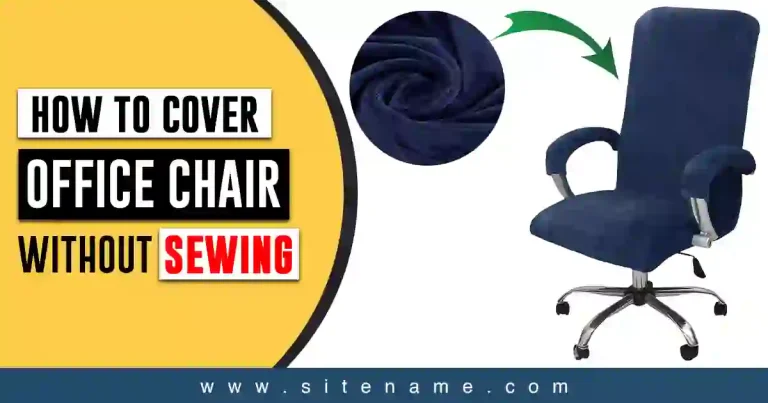How To Make Home Office More Comfortable
Many people nowadays work from home, either part-time or full-time. It has somewhat become a norm for the people. Although working from home offers flexibility and convenience, it also introduces new challenges, such as how to make home office more comfortable and productive.
A home office is an integral part of your workplace and making it comfortable is critical for your mental health, physical well-being, productivity, and creativity. On the other hand, a poorly designed home office can cause discomfort and even pain.
Your home office is more likely to be challenging especially if you have limited space or resources. In this article, we will discuss a few ideas about how to make your home office more comfortable and functional so that it meets your particular requirements.
How to Make Home Office More Comfortable and Ergonomic?
Having an ergonomic home office setup is essential to reduce the risk of physical strain, fatigue, and injury that can result from prolonged sitting or poor posture. Here are some tips to make your home office more ergonomic:
1. Purchase Ergonomic Chairs
Your chair is the most significant piece of furniture in your office. A comfortable chair can help prevent back discomfort, shoulder pain, and neck pain caused by prolonged sitting. While buying a chair, check for the following characteristics:
- Adjustable height: Make sure your feet are flat on the floor and your knees are at a 90-degree angle. A chair that is overly high or low can cause discomfort or strain on your legs.
- Lumbar support: The lower part of your back should be supported to maintain good posture and reduce back pain.
- Armrests: Armrests support your arms and shoulders, preventing them from straining when typing.
- Swivel: An ergonomic chair that can swivel lets you reach for stuff without hurting your back or twisting your neck.
- Padding: A well-padded seat and backrest can improve the comfort of your chair, especially if you sit for long.
When you have a comfortable chair, you can work for longer hours without distress. If you already have a chair that doesn’t have all of these features, you can consider buying accessories such as a lumbar cushion or armrest pads to improve your chair’s comfort.
Finding an office chair that adds value to your day-to-day seating and isn’t much expensive at the same time is a hard thing. For helping you find a cheap office chair, we’ve already done a thorough research and come up with the 15 best office chairs under $500.
2. Adjust the Height of the Desk
Your desk should be at the appropriate height for you to work comfortably. If it’s too high or low, it can strain your shoulders, neck, and back. To adjust the height of your desk, follow the instructions below:
- Position of feet: Sit in your chair with your feet flat on the floor, and your knees at a 90-degree angle.
- Position of elbows: When typing, adjust the height of your chair so that your elbows are at a 90-degree angle.
- Use of footrest: If your desk is too high, use a footrest to keep your feet flat on the floor.
- Use of risers: If your desk is too low, use risers to raise your monitor and keyboard to a comfortable level.
It’s also essential to ensure that your computer monitor is at eye level. If your monitor is too low, you can develop neck pain from looking down. If it is too high, it might induce visual fatigue and discomfort.
If you are considering purchasing an electric motor standing desk, you will realize that there are several types to choose from. The two most popular electric standing desks are dual-motor and single-motor desks. It is necessary to research each type before deciding which is the best option for your needs.
3. Use a Monitor Stand
A monitor stand is an effective way to make your home office more ergonomic. It provides various health benefits to the users, such as:
- Improves posture: By raising your monitor to eye level, a monitor stand helps you maintain good posture, reducing strain on your neck, shoulders, and back.
- Reduces eye strain: A monitor stand can help reduce eye strain by positioning your monitor at the correct distance from your eyes and minimizing glare or reflections.
- Increases desk space: By lifting your monitor off your desk, a monitor stand frees up valuable desk space for other items, reducing clutter and increasing productivity.
- Provides flexibility: Many monitor stands are adjustable, allowing you to customize the height and angle of your monitor to your specific needs.
- Enhances aesthetics: A monitor stand can also enhance the aesthetics of your workspace, making it look more organized and professional.
When choosing a monitor stand, look for one that is sturdy, adjustable, and also compatible with your monitor’s size and weight. By using a monitor stand, you can improve your posture, reduce eye strain, and create a more ergonomic home office setup.
How to make your Home Office more Comfortable?
Making a home office comfortable is important to ensure that you are productive and can work efficiently. Here are some to-do things to make your office comfortable:
1. Add Adequate Lighting
Eye strain and headaches are frequently experienced while working on a computer. Many home offices don’t have access to natural sunlight, so they can use artificial lighting that doesn’t reflect on the computer screens.
You can incorporate good lighting into your office space in a number of ways including:
- Use a Desk Lamp: To provide task lighting for your work, use a desk lamp as well as overhead lighting.
- Avoid Direct Lighting: Avoid bright, direct lighting because it can make your computer’s screen glare.
- Place your desk near a window: Place your desk near a window, if you have one, so that the light is not shining directly on your screen.
- Use blinds or curtains: Use blinds or curtains to regulate the amount of natural light entering your workspace.
- Use screen dividers: This is also a helpful technique for giving space to people for activities like video calls while at the same time not cutting off light for anyone.
2. Keep a Clutter-free Space
Workplace chaos can be stressful and distracting, making it challenging to concentrate. The following advice will help you organize your office by getting rid of unnecessary clutter:
- Use storage options: To keep your paperwork and supplies organized, use storage options like shelves, drawers, and filing cabinets.
- Keep mostly-used stuff: Keep your workspace tidy and devoid of extraneous items like your phone, computer, and notepad.
- Use cable organizers: To keep your cords and cables organized, use cable organizers.
- Get rid of anything you no longer need: Get rid of anything you no longer need, including unused office supplies, broken equipment, and out-of-date software.
3. Improve Ventilation
Poor ventilation can lead to stuffiness, a lack of fresh air, and a decrease in productivity. Here are some tips for improving the ventilation in your home office:
- Open windows and doors: One of the easiest ways to improve ventilation in your home office is to open windows and doors. This will allow fresh air to circulate and will help remove stale air.
- Use a fan: If your office doesn’t have windows, or if you need to improve airflow, consider using a fan. A ceiling fan, table fan, or standing fan can help circulate air.
- Install an air purifier: An air purifier can help remove allergens, dust, and other pollutants from the air in your home office.
- Use natural ventilation methods: If your office is located near a window or door, consider using natural ventilation methods. This can include using a window fan, opening windows on opposite sides of the room, or using a cross-ventilation technique.
By improving the ventilation in your home office, you can create a more comfortable and productive work environment.
How to Make your Home Office Less Boring?
If you’re spending a lot of time in your home office, it’s important to make it a space that’s not only functional but also enjoyable to spend time in.
You don’t necessarily have to spend a hefty amount on this as a low-maintenance solution can also work the same. Here are some suggestions for making your home office less boring:
1. Customize your Home Office
Here are some ideas to customize your home office space that can help make it less boring and more inviting:
- Create a theme: Choose a theme that inspires you and incorporate it into your workspace decor for giving it a personal touch. For example, if you love the beach, add a few nautical accents to your office.
- Decorate with artwork: Hang some artwork that inspires you or makes you happy on the walls of your home office. It could be a painting, a photograph, or a poster.
- Add plants: Adding plants to your home office can improve air quality and make your space more attractive.
- Use colorful accessories: Add pops of color to your home office with soft furnishings like a colorful rug, desk lamp, or throw pillow. This can help make your space feel more inviting and cheerful.
- Organize with style: Organize your desk and shelves with stylish storage containers that reflect your personality. This could be a colorful storage box or a cute pencil holder.
- Use scented candles/ diffusers: For making your office smell good, you can use scented candles or diffusers.
- Experiment with different layouts: Rearrange your desk or furniture to create a new perspective and add visual interest to your workspace.
- Use fun office supplies: Swap out your basic office supplies for colorful and fun options like a decorative stapler or tape dispenser, colorful pens, or a whimsical paperweight.
Personalizing your home office can make it a space you enjoy spending time in. Find ways to make it your own and make it feel like a space that is according to your unique taste.
2. Take Breaks
Taking breaks is an important aspect of making your home office less boring. When you spend long hours in front of a computer, it’s essential to take regular breaks to prevent eye strain, fatigue, and boredom. Here are some recommendations for taking breaks:
- Schedule regular breaks: Set a timer to remind you to take a break every hour or two. During your break, step away from your desk and do something that relaxes you, such as stretching, taking a short walk, or reading a book.
- Practice the 20-20-20 rule: The 20-20-20 rule is a technique that can help reduce eye strain. Every 20 minutes, look away from your computer screen and focus on an object that is 20 feet away for 20 seconds.
- Meditate or practice deep breathing: Meditation and deep breathing exercises can help reduce stress and increase focus. During your break, spend a few minutes meditating or practicing deep breathing exercises.
- Listen to music: Music can help you relax and improve your mood. Create a playlist of your favorite songs and listen to them during your break.
- Connect with coworkers: Since working from home can feel isolating, it’s crucial to maintain contact with your coworkers. Check-in with your coworkers during your break, take a virtual coffee break or join a video chat.
By taking regular breaks, you can prevent boredom and improve your focus and productivity. Find what works best for you and make sure to take breaks throughout the day.
Final Thoughts!
In general, creating a comfortable home office is essential for maintaining productivity, reducing stress, and promoting overall well-being. To make your home office more comfortable, equally, focus on everything from adjustable desks to office lighting and from color themes to artificial plants.
Remember to take regular breaks and prioritize self-care to avoid burnout and maintain optimal productivity. With these tips, you can create a comfortable and enjoyable workspace that supports your work and personal goals while promoting overall comfort and well-being.







